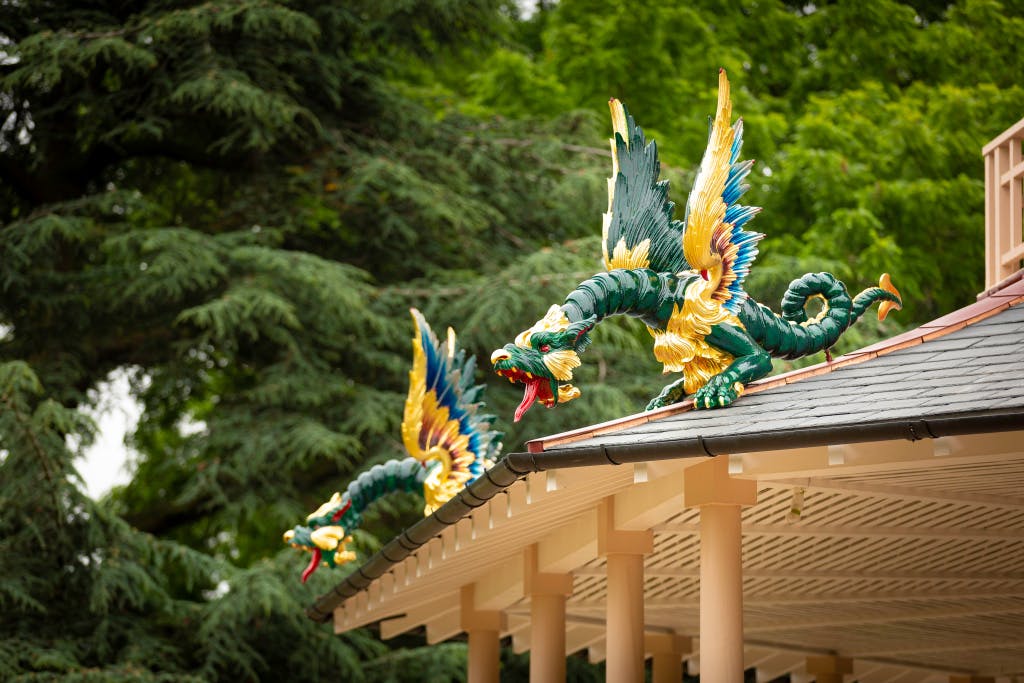
Dutiful, intelligent and cultured, but cruelly labelled ‘mad’
George III is largely known as being the King who lost America, and his mind. He is also the longest-reigning male monarch in British history, reigning for almost 60 years. His reign was marked by scientific progress and discovery, but also political and social upheaval – and war.
George III grew up with a great awareness of his duties as King, and made national or personal decisions for the benefit the United Kingdom. His choice of the German Princess Sophia Charlotte of Mecklenburg Strelitz, the future Queen Charlotte, as his wife – and his devotion to their family – were partly driven by a wish to set a good example to his subjects. His passion for arts, sciences, architecture and agriculture was driven by a desire to use his power to benefit the country.
Although well intentioned, the personal pressure George felt to be a good king led to a stubbornness that affected his relationships with his family and his political decision-making.
I am born for the happiness or misery of a great nation and consequently must often act contrary to my passions.
George III
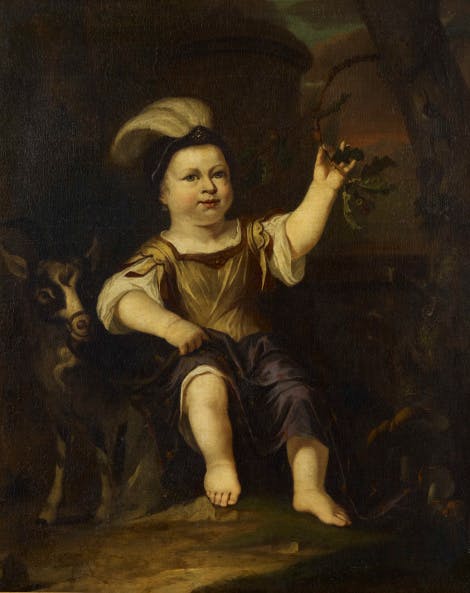
Image: George III when Prince of Wales, c.1740. Royal Collection Trust / © Her Majesty Queen Elizabeth II
Background and early life
George III was born on 4 June 1738 at Norfolk House, London. He was the second child and eldest son of Prince Frederick Louis, and Princess Augusta of Wales.
The young Prince George lived mainly in his parents’ official residences in London and in the White House at Kew. His lessons included geometry, history, Latin and Greek, and he was the first British King to be educated in the sciences.
Much of George III’s early life was dominated by his father and grandfather’s personal and political grievances. His father, Frederick was keenly aware that he might not inherit the throne and so focused his hopes on his son, instructing the young Prince to fill the crown ‘worthily’.
Frederick died unexpectedly at the age of 49 on 31 March 1751. His mother, Princess Augusta took responsibility for educating the future King. This was accompanied by great pressure to live up to his father’s expectations and to govern as he would have done.
From at least 1756, George was given his own household at Kew Palace. Early tutors dismissed him as ‘sullen’ and ‘uninterested in business’, but his fortunes changed with the addition of John Stuart 3rd Earl of Bute, his mother Augusta’s closest advisor, to his household.
Bute became a father figure to the Prince, who grew in confidence and promised to ‘throw off his indolence’. Under Bute’s influence, George became interested in architecture and received tuition at Kew from the architect William Chambers.
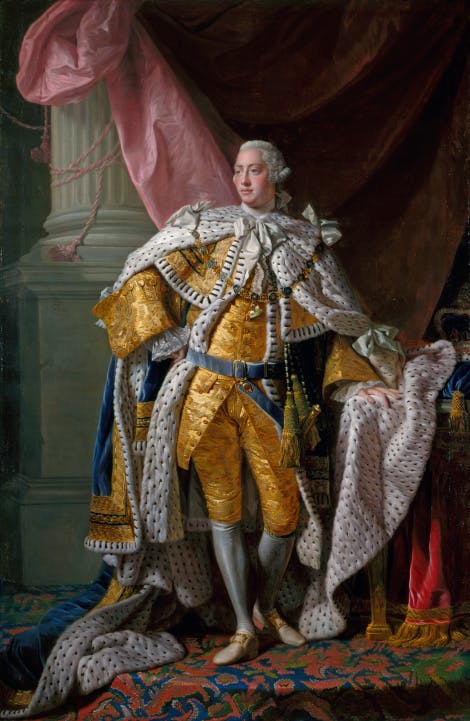
Image: George III in coronation robes, c.1761-2. Royal Collection Trust / © Her Majesty Queen Elizabeth II
Becoming King
George learned of his grandfather’s death as he was crossing Kew Bridge on 23 October 1760. Aged 22, he was now King George III.
Almost immediately, he distinguished himself from his German predecessors, declaring ‘Born and raised in this country, I glory in the name of Briton.’
Perhaps influenced by his parents’ beliefs, the new King replaced his grandfather’s supporters with members of the opposition in government, including Bute as first minister. George was accused of favouritism, which made his early reign incredibly difficult.
George's Marriage to Queen Charlotte
In addition to his political concerns, George needed to find himself a wife – not least because he was desperate for female companionship.
Advising against a match with the King’s favourite Lady Sarah Lennox, lest it tie him into a political alliance, Bute set about finding a suitable German Queen-to-be.
You have often accused me of becoming grave and thoughtful, it is entirely owing to an ever-increasing admiration of the fair sex… I should be asham’d after so long having resisted the charms of those fair creatures now to become their prey.
George III in a letter to John Stuart, 3rd Earl of Bute
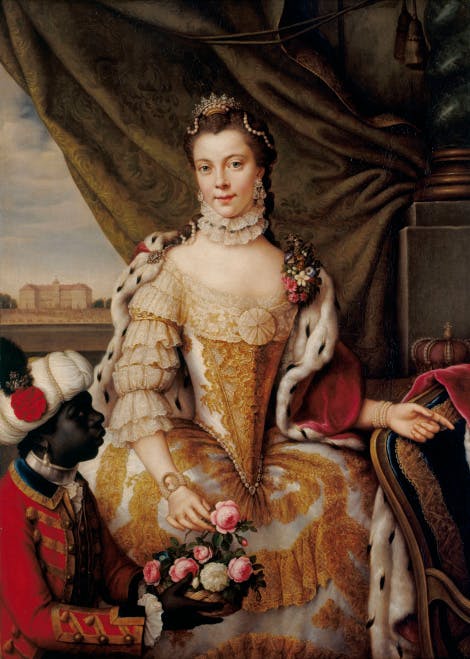
Image: Portrait of Queen Charlotte (1744-1818) when Princess Sophie Charlotte of Mecklenburg-Strelitz, c.1761. Royal Collection Trust / © Her Majesty Queen Elizabeth II
After rejecting seven other princesses, Bute chose Sophia Charlotte of Mecklenburg Strelitz, describing her to the King as being ‘amiable’ and ‘capable of taking any impression and being moulded into any form’ – although not a great beauty.
After several months’ delay due to her mother’s death, Charlotte landed at Harwich on 7 September – George met his new Queen the following day, and married her the same evening. King George III and Queen Charlotte were crowned in Westminster Abbey just two weeks later, on 22 September 1761.
A Happy Family Life
By all accounts, George and Charlotte’s life as newlyweds was a happy one, until George’s first period of illness in 1788. They would duet together with Queen Charlotte playing the harpsichord and George playing the flute. Music concerts were held every week in each of the King’s residences.
Within just two months of their marriage, Charlotte was pregnant with their first child. George, Prince of Wales was born on 12 August 1762 and the couple would have 14 more children over the next 20 years.
The King was an active and devoted parent. The family used his childhood home of Kew as a retreat during summer weekends, with the children playing cricket and football in the gardens.
Tragedy struck George III’s family on 20 August 1782, when Prince Alfred died, aged just two. Just six months later Prince Octavius died, aged four.

Image: George III, Queen Charlotte and their six eldest children. © Royal Collection Trust / Her Majesty Queen Elizabeth II
The royal family… live like the simplest gentlefolks. The King has not even an equerry with him, nor the Queen any lady to attend her when she goes for her airings.
Novelist Frances Burney in 1785
The Princesses' marriages
George III’s devotion and enthusiasm for his children when they were young manifested itself as controlling behaviour that some family members found quite stifling.
For the Princesses, this meant that the King was reluctant to arrange marriages for them, which would give them freedom and independence. Only Charlotte, the Princess Royal was married before the age of 40. Princess Augusta described their situation as ‘suffering martyrdom from anxiety of mind and deprivation of happiness’.
The Problem with the Prince of Wales
George and Charlotte were united in their belief that royals should live modest lives. Unfortunately for them, their eldest son lived extravagantly.
Prince George, The Prince of Wales had numerous affairs, including with the wife of the Hanoverian Ambassador. In 1785, aged 21, he married the Roman Catholic, Maria Fitzherbert illegally and in secret. George III had banned any royals from marrying Catholics and without his permission.

Image: Miniature of the Prince of Wales, c.1780-1782. © National Portrait Gallery, London
The Prince also got himself into astronomical debts. He was courted by opposition politicians who promised to pay off his debts and give him more money, which caused the King huge anxiety.
The King and Prince’s relationship recovered when the Prince married Caroline of Brunswick. The King hoped marriage would temper his son’s behaviour. However, they soon fell out again in 1801 over the raising of the Prince of Wales’ only daughter, Princess Charlotte.
The Prince of Wales treated his father’s illness as an opportunity for personal gain. If George III was declared unfit to rule, the Prince would become regent and rule in his father’s stead. He could bring his opposition friends into government, who in turn would increase his income and pay off his debts.
The Prince even installed his own doctor, Richard Warren in his father’s household. Dr Warren wrote the gloomiest reports on the King’s recovery to influence the likelihood of him being declared incapacitated. This caused a rift in the whole family, with Queen Charlotte viewing these measures as betrayal.
At a time when I am so harassed by many disagreeable events, any improper behaviour of the Prince of Wales is doubly severe to me.
George III

Image: George III in Windsor uniform. © Historic Royal Palaces
Was George III a good king?
As King, George displayed remarkable empathy and humility for his subjects. In 1786, he was attacked by Margaret Nicholson, who tried to plunge a knife into his chest. When she was rough-handled away, George cried out, 'The poor creature is mad. Do not hurt her she has not hurt me' and ensured she was taken to hospital.
At Kew, he bathed in the Royal Kitchens rather than the palace, to save his servants the trouble of carrying hot water to a different building.
But George was also a conscientious and serious ruler who engaged deeply in the social, economic and political issues of the day.
A Symbol of Unity?
During the Napoleonic Wars in the late 18th century, George was visibly supportive of the military. On one occasion over 10,000 people came to watch the King inspect his troops. He began to wear more military clothing and introduced the Blue and Red Windsor uniform, which was to be worn by all who attended Windsor Castle.
At this stage in his reign, George had never been more popular. Despite an increased revolutionary feeling in Britain and food shortages, the British monarchy began to be viewed as a symbol of national unity.

Image: Portrait of George III and Queen Charlotte, depicted as farmer and wife in 1785. © Historic Royal Palaces
'Farmer George'
George was particularly interested and adept at farming. He felt strongly that he should use his lands to better feed the nation, and used Windsor and Kew to develop improvements in agriculture. He published his thoughts on more than one occasion, using the pseudonym ‘Ralph Robinson’.
George enlisted Sir Joseph Banks to smuggle merino sheep from Spain to breed them with British sheep. This flock of experimental sheep grazed under the Great Pagoda at Kew.
George would walk his fields and till the soil himself, often being mistaken for an ordinary gentleman. His nickname of ‘Farmer George’ endeared him to the public.
GEORGE III’S CULTURAL LEGACIES
Kew Gardens
Under George’s leadership, Kew Gardens became a centre of discovery and attracted visits from leading scientists. The explorer and naturalist Joseph Banks ensured that any new discoveries were sent to the King's Garden first.
The King patronised Captain Cook’s first voyages to Australia and the south pacific. In 1796, the first kangaroos to enter Britain were kept at Queen Charlotte's Cottage.
However, Kew’s success was dependent on exploitation, particularly of First Peoples and moving plants around the world was inextricably linked with the trade in enslaved people.
The Beginnings of the British Library
George invested heavily in his library. After his death, 65,000 of his books were given to the British Museum. This collection now forms the core of the British Library.

Image: Queen Charlotte's Cottage at Kew. © Historic Royal Palaces
The Discovery of Uranus
George III was the first European King to study natural sciences. He funded the astronomers William and Caroline Herschel, which eventually led to the discovery of a planet – which we now know as Uranus.
A Collection of Canalettos
In 1762, George bought over 2,000 gems, drawings and paintings from Consul Joseph Smith, the agent of the artist Canaletto. The collection includes almost 300 of the artist’s finest works, some of which can be seen on display in Queen Charlotte’s Drawing Room at Kew Palace.
The King's Observatory
In 1769, George commissioned the architect, William Chambers to build an observatory on his Richmond estates to view the Transit of Venus. It was believed astronomy could lead to improvements in naval and merchant navigation.
George’s collection of scientific instruments and natural history specimens were transferred to Kings College London in 1824.
George III and America
The American Revolution
The American Revolution began as a series of uprisings against British colonial rule by 13 separately governed colonies in North America. The Thirteen Colonies in their traditional groupings were: the New England Colonies (New Hampshire, Massachusetts, Rhode Island, and Connecticut); the Middle Colonies (New York, New Jersey, Pennsylvania, and Delaware); and the Southern Colonies (Maryland, Virginia, North Carolina, South Carolina, and Georgia).
The uprisings were a response to various measures introduced by the British at the end of the Seven Years War (1756-1763) against France, where much of the fighting took place in the North American colonies as well as in Europe.
These wars left Great Britain in huge amounts of debt and with ongoing costs of securing North American borders against French incursions. The British introduced a series of taxes in the hope of raising funds to pay for these costs, and to regulate trade which was undermined by smuggling.
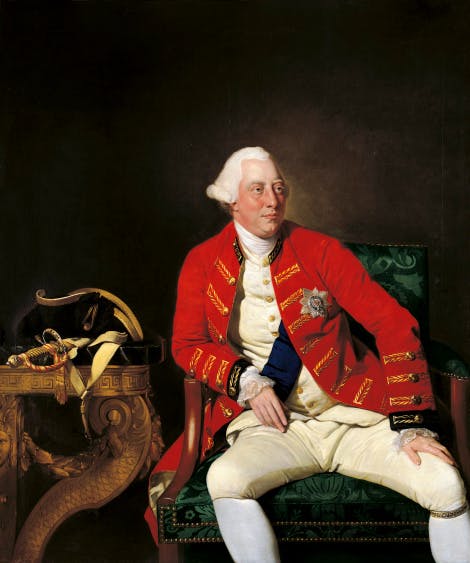
Image: George III in 1771. Royal Collection Trust / © Her Majesty Queen Elizabeth II
The Royal Proclamation of 1763 was another consequence of the Seven Years War. It aimed to prevent American colonists from expanding their territories westwards into lands held by Native Americans, which had previously been claimed by the French. The taxation and restriction of American colonists was extremely unpopular. Years of unrest and discord followed.
The Americans maintained that Parliament could make laws, but only if they had representation in parliament.
Independence is Declared and George is Named a Tyrant
Although some taxes were repealed and some concessions were made, unrest continued and led to the signing of the American Declaration of Independence on 4 July 1776, in which representatives of the 13 colonies declared themselves States of America and claimed independence from Great Britain. The signing of this document is often considered the founding of the United States of America. War would rage between Americans and Great Britain until 1783.
George III became a figure of hatred for the American Independence movement. In New York City, a gold statue of the King was torn down by angry Americans. In the Declaration of Independence, George is described as, ‘A Prince whose character is thus marked by every act which may define a Tyrant, is unfit to be the ruler of a free people’.

Image: George III, engraved by William Skelton (1763-1848), showing the King in military uniform. © Historic Royal Palaces
'The King Who Lost America'
George of course did not have the authority to impose laws on America on his own. In the UK, Parliament and its elected government were supreme and so any laws made in America and elsewhere were made by the Government and not the King. Nonetheless, George did choose the government and the prime minister.
George asked Lord North to form a government in 1770. Lord North was responsible for a series of tough measures aimed at quelling American dissent. By the 1780s even though Lord North wished to retire, the King insisted he remain as prime minister; only North would continue the policy of American suppression.
After a humiliating British defeat at the Battle of Yorktown in 1781, British and American troops consolidated their positions and by the end of 1782, fighting had ceased. The Treaty of Paris formally ended the war in 1783.
George III took the loss of America very badly and considered abdicating. He saw the loss of the American colonies a failure of duty. Nonetheless, at the first diplomatic meeting between the two countries after the war, he was magnanimous.
I will be very frank with you. I was the last to consent to the Separation, but the Separation having been made and having become inevitable, I have always said, as I say now, that I would be the first to meet the Friendship of the United States as an independent Power.
George III
The King's Health Declines
Despite George III's many accomplishments and complex reign, he is most remembered for periods marred by physical and mental illness in 1788-89, 1801 and 1804, and his final illness from 1810 until his death.
George is often referred to as ‘The Mad King’, and his periods of ill health as his ‘madness’. These phrases are unhelpful, not least because they do not describe the extent of his ailments. They also undermine the rest of his achievements and cruelly suggest that he was somewhat lesser because of his illness.
Most importantly, these phrases are insensitive because they perpetuate stigma surrounding mental illness. It is only in recent years, because of a better understanding of mental illness, that historians have re-evaluated George III’s reputation.

The King's 'Malady'
George III's mental illness explored
Despite his achievements, George III is commonly referred to as 'The Mad King' - an unhelpful phrase that undermines the extent of his deeply traumatic ailments.
How did George's Illness affect his marriage to Charlotte?
George’s illness forever changed his relationship with his wife, Queen Charlotte. His mania-induced rants often turned towards Elizabeth Herbert, the Countess of Pembroke, which was humiliating for the Queen.
There is also the possibility that he was violent towards the Queen during his illness. In November 1789, the Queen’s dresser Frances Burney wrote, ‘The queen is almost overpowered with some secret terror.’
As the illness progressed, the King was moved as far away from the Queen as possible and locked in his room. The stress turned the Queen’s light brown hair white.
Although George and Charlotte would make public appearances together, they lived separately after the illness of 1789. Despite the terrible circumstances, George never stopped loving his wife and often called for her during his illness.
After 1811 when he was moved to isolation in Windsor, the Queen still visited him at least weekly.
My dearest King... our separation must be & really is equally painful to us both... The physicians assure me that [a meeting] ought not to take place at present & therefore am under the painful necessity to deprive myself of so satisfactory a pleasure...
Queen Charlotte in a letter to George III the day after they were separated
The death of Princess Amelia and the Regency
In 1810, George III was already blind and weak with age. The strain of worrying about the sickness of his youngest child and favourite daughter, Princess Amelia, seems to have brought on a final period of illness.
Amelia died on 2 November 1810, aged just 27. Soon after the King was moved to permanent seclusion in Windsor. He would never recover.
On 29 January 1811, while the King was strapped into his jacket almost daily and still believing that Princess Amelia was alive, he signed the Regency Bill. His powers were handed over to his son, in effect ending his reign.
The death of Queen Charlotte
Queen Charlotte died at Kew on 11 November 1818. When her coffin was brought to Windsor, staff lined the castle courtyards with straw to prevent the King from hearing her funeral procession.
The End
George remained alone at Windsor for almost a decade. He would hold imaginary conversations with his dead children and then spend hours crying. He consoled himself by playing the organ and flute and would send for books from his library. He caught pneumonia and died on 29 January 1820.

Image: Funeral Procession of George III. © Museum of London
How should we remember George III?
George III could be stubborn and remarkably unfeeling when it came to the treatment of his own family members. But he could also show enormous amounts of empathy and humility.
His childhood and education instilled in him a strong sense of duty and a determination to serve his country well. In his frugal living and love of the countryside and domestic life, he set out to create a popular example for his people.
Perhaps it is best to remember George III as he remembered himself. In his final years in seclusion at Windsor, he would sometimes wear black, ‘In memory of George III who was a good man.’
BROWSE MORE HISTORY AND STORIES

Queen Charlotte
Wife of George III and mother to 15 children

The royal kitchens at Kew
The kitchens have survived, practically untouched
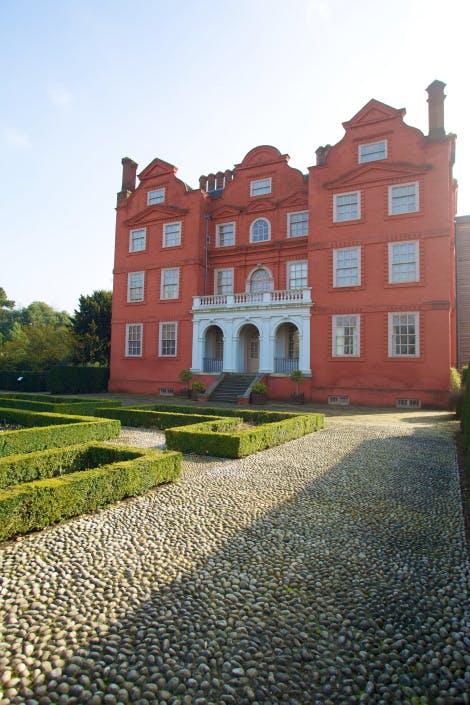
The story of Kew Palace
Britain's smallest royal palace and George III's private retreat
EXPLORE WHAT'S ON

- Things to see
George III’s Breakfast Room and Dining Room
Learn about how George III ate and his relationship with food during his treatment at Kew Palace.
- Open
- Kew Palace
- Included in Kew Gardens admission

- Things to see
George III's Library and Ante Room
Discover George III's Library and Ante Room, which the King used while recuperating in 1804.
- Open
- Kew Palace
- Included in Kew Gardens admission

- Things to see
The Royal Kitchens
Get an insight into life 'below stairs' at Kew Palace in the Royal Kitchens, preserved as they were in 1818 during the reign of George III.
- Open
- 11:00 - 16:00
- Kew Palace
- Included in Kew Gardens admission
Shop online

Shop Kew Palace gifts
The most intimate of our six royal palaces, Kew was built as a private house in 1631 and used by the royal family between 1729 and 1818. These gifts and souvenirs are all inspired by Kew Palace.
From £4.00
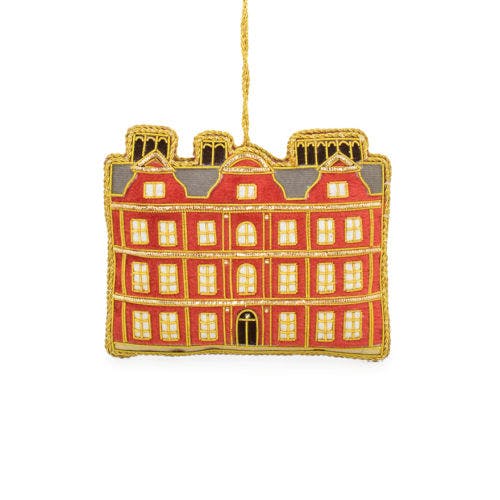
Kew Palace luxury hanging decoration
This luxury handmade Christmas tree decoration features the design of the front of the Dutch House at Kew Palace on the River Thames in south west London.
£29.99


